October 6, 2014
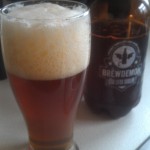
So, you want to start brewing your own beer?
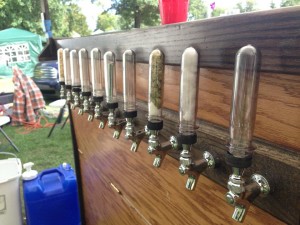 For years I had always thought about how cool it would be to brew my own beer. To be able to reach into the refrigerator and grab a bottle of beer hand it to a friend or relative and say, “try this, I made it” and watch their faces as they take the first sips of the wonderful elixir that I created. But I always seemed to have something else to do, I was always “too busy” working or raising my family to get into brewing! The fact was I was afraid to start something that was either too complicated and/or too expensive and have it turn out like crap. Ahh, if I only knew then what I know now I could have been brewing beer and enjoying the hobby of brewing a lot sooner.
For years I had always thought about how cool it would be to brew my own beer. To be able to reach into the refrigerator and grab a bottle of beer hand it to a friend or relative and say, “try this, I made it” and watch their faces as they take the first sips of the wonderful elixir that I created. But I always seemed to have something else to do, I was always “too busy” working or raising my family to get into brewing! The fact was I was afraid to start something that was either too complicated and/or too expensive and have it turn out like crap. Ahh, if I only knew then what I know now I could have been brewing beer and enjoying the hobby of brewing a lot sooner.
With that said I’m no expert brewer, there are many brewers out there that know more than I do about the art and science of home brewing. I only know what has worked for me and what hasn’t. Hopefully for some of you reading this it will be a helpful guide and give you a better idea of what’s involved and where to start. In this article I will cover briefly several different methods of brewing beer and what I think are some of the best options for getting started and growing your hobby.
There are many different opinions about how to start and what is the best way to get into brewing. Some people will say to jump in with both feet and start with a $300 or $500 home brew set up that will get you brewing 5 gallon all grain batches right away! Hey if that works for you great, but I personally didn’t want to spend that kind of money only to find out that I didn’t like it. Also I didn’t want to start something that was “too complicated”. All grain brewing, in it’s traditional form can be complicated and overwhelming for someone starting out in this hobby since there are multiple step in the process and a lot to remember. I’ve talked with a lot of people that started this way and found that it was a lot of work for not so good results. Not because of lack of trying but because they just didn’t know what they were doing and didn’t have the resources to point them in the right direction. Those types of stories are what kept me from getting started sooner than I did.
Very briefly I got started as the result of my whining to my wife before Christmas 2011 as she dragged me through yet another store looking to finish our gift shopping. As we walked through one of the many stores I saw display for Mr Beer, with the kits and refill recipes and I made a very deliberate point of drawing her attention to it. Like a 7 year old boy at the toy store I made it clear that this home brewery would be the perfect Christmas gift for a honest, hardworking, beer loving father, husband and all around good guy. Apparently my groveling worked because on Christmas morning I not only got the Deluxe Mr. Beer Kit but also 2 refill 3 packs giving me 8 total recipes to start my brewing hobby.
Getting started with the Mr. Beer kit the way that I did really worked well for me. First, I really didn’t need to learn the science of brewing or anything beyond knowing that the hopped extracts that came in the Mr. Beer kit had basically everything the yeast needed to make alcohol. Second, the process was simple. I didn’t need to worry about boiling anything. All I needed to do is heat the water, mix in the hopped malt extracts, pour into the “Little Brown Keg” fermenter, add cold water to cool the wort and top off the fermenter and add the yeast. What could be simpler? After doing this a few times I could get the whole process done and have beer fermenting away in less than an hour.
Honestly this made some pretty good beer. I remember taking my first beer to a family party and having people taste it and they actually liked 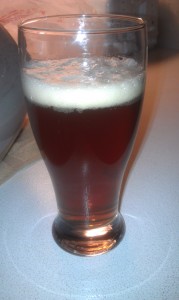 it. Was it a great beer? No, probably not but it was good enough that I returned home with more empty bottles than full ones and to me It tasted great because I had made it! Mr. beer also had at the time an online forum that new brewers could go to and get help and good advice about what they were doing with different recipes and the processes. Yes, the process is fairly simple but some people can get easily confused or because it is so simple people start to over think what they are doing which often leads to silly mistakes. The Mr. Beer forum was a great place to get direction and feedback that you really couldn’t get anywhere else. That forum (in my humble opinion) has since gone down hill and isn’t nearly as good a resource as it once was. For that reason I created this website and the forum, to pick up the slack and help new and experienced brewer alike. Many of the people that made the Mr Beer forum so great have since moved most of their activity to the BeerBorg forum which is now the place to be.
it. Was it a great beer? No, probably not but it was good enough that I returned home with more empty bottles than full ones and to me It tasted great because I had made it! Mr. beer also had at the time an online forum that new brewers could go to and get help and good advice about what they were doing with different recipes and the processes. Yes, the process is fairly simple but some people can get easily confused or because it is so simple people start to over think what they are doing which often leads to silly mistakes. The Mr. Beer forum was a great place to get direction and feedback that you really couldn’t get anywhere else. That forum (in my humble opinion) has since gone down hill and isn’t nearly as good a resource as it once was. For that reason I created this website and the forum, to pick up the slack and help new and experienced brewer alike. Many of the people that made the Mr Beer forum so great have since moved most of their activity to the BeerBorg forum which is now the place to be.
As I used this kit I learned that there was so much more to brewing than opening a couple of cans of the hopped malt extract (HME) and pouring them into hot water. You could really customize your beer by adding different extracts, specialty grains, hops, honey or even canned fruit. So I experimented, I experimented with a Mr. Beer oatmeal stout recipe that I added extra extract which raised the alcohol level. I then added coffee and chocolate at bottling time. By making just a few minor changes like this I had created a completely different beer and it turned out incredible.
My point is that you can make some really great beer with these basic extract brewing kits such as Mr. Beer and it makes it pretty easy to get started and enjoying home brewed beer. The downside is that if you want to make more than 2 gallons of beer at a time you will need to buy more equipment/fermenters and the Mr. Beer fermenter isn’t (in my humble opinion) the best fermenter if you plan to move beyond this type of brewing as it only hold just over 2 gallons and it doesn’t have any way to add an airlock. Also you pay for convenience. Two gallon recipe kits start at about $16 for a beer that is relatively low in alcohol at 3.7% ABV (Alcohol By Volume) and light on taste. To improve the ABV and many times the taste you will need to spend upwards of $25 or more depending on the recipe for 2 gallons of beer. That’s about 21 – 12 ounce bottles of beer.
Another option to the Mr Beer kit is BrewDemon. Brew Demon entered the market nearly 2 years ago and uses the same type of hopped extract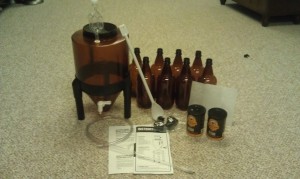 beer recipes that Mr. Beer does but they use a slightly different sized and shaped fermenter that they claim addresses the off flavors that are common with the Mr. Beer kits. The fermenter is actually a 3 gallon fermenter, so you can comfortably brew 2-1/2 gallons of beer in it without worry (I’ll come back to why that’s important later). Just like Mr. Beer, the ease of use is high with a low learning curve and you have a good variety of beer recipes to choose from that make very good beer with a lot of different options. Again you pay for convenience with recipe’s starting at $17 for 3.7% ABV brews and $19 and up for a bump in both flavor and ABV.
beer recipes that Mr. Beer does but they use a slightly different sized and shaped fermenter that they claim addresses the off flavors that are common with the Mr. Beer kits. The fermenter is actually a 3 gallon fermenter, so you can comfortably brew 2-1/2 gallons of beer in it without worry (I’ll come back to why that’s important later). Just like Mr. Beer, the ease of use is high with a low learning curve and you have a good variety of beer recipes to choose from that make very good beer with a lot of different options. Again you pay for convenience with recipe’s starting at $17 for 3.7% ABV brews and $19 and up for a bump in both flavor and ABV.
So what is the difference between Mr. Beer and BrewDemon. BrewDemon’s fermenter is one of the biggest differences. With the 3 gallon fermenter and the airlock “bubbler” option it gives you more flexibility to go beyond the 2 gallon extract brewing. Because of it’s size/capacity if you get 2 of the “Little Demon” fermemters you can actually move into brewing 5 gallon recipes (extract, partial grain or all grain) by splitting the batches between the two fermenters. This opens up many different options if you want to experiment a little. BrewDemon also has 6 gallon recipe kits that are just as easy to use as the smaller 2 gallon recipes. They are currently working on a 6 7 gallon conical fermenter that can be easily used with these larger recipe kits.
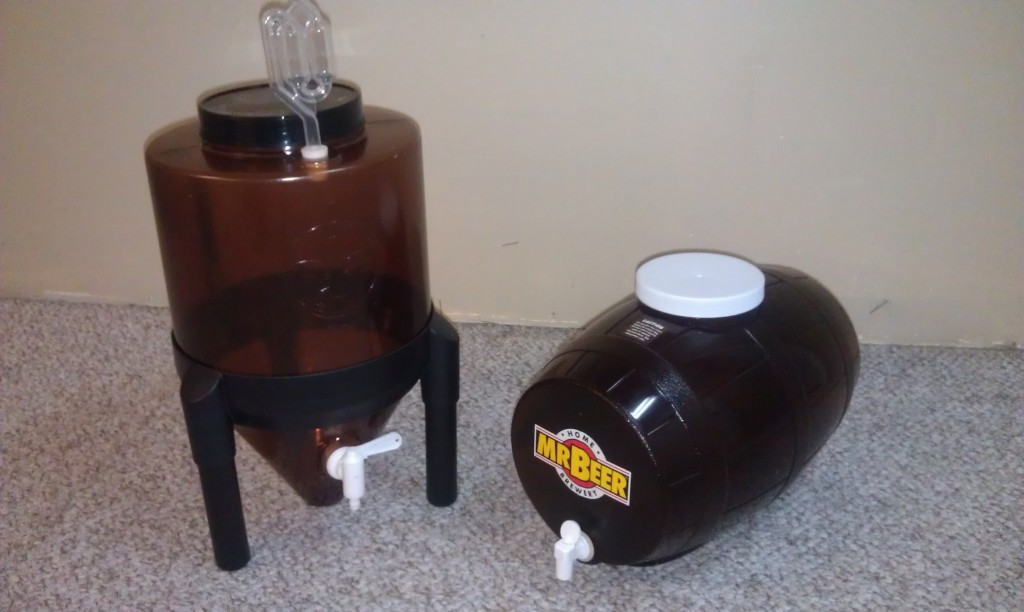
I have always been a big advocate or keeping things simple. If I can make beer with minimal effort and still create a great beer I’m all for it. I also like the best bang of the buck when it comes to brewing, and extract brewing (such as Mr Beer & BrewDemon) tends to be more expensive than partial grain (extract and grain) brewing which tends to be more expensive than all grain brewing. The problem is every time you step up to the next level (so to speak) there is more complexity, more time commitment and more equipment that is generally needed. But once you have the equipment the cost per batch of beer is pretty low. Remember what I mentioned about paying $16 for a 2 gallon extract recipe from Mr. Beer? Well for that same $16 in all grain ingredients you can make 5 to 6 gallons of beer, usually with more flavor and a higher ABV. Now there are ways to move into all grain and take advantage of this lower cost while still keeping the complexity and effort relatively low so you can have the best of both worlds.
Brew in a bag or BIAB is a method of all grain brewing that eliminates some of the equipment needed and combines several steps that are traditionally used in brewing. This method has it’s origins in Australia and was developed due to the high cost and availability of brewing equipment there. BIAB allows the brewer to do everything right in the brew pot, (kind of like extract brewing) but leverage the advantages of using all grain. To really understand how this works I will need to delve briefly into how to brew using the traditional all grain method.
There are several steps in the process of traditional all grain brewing. First the grains are generally put into a container called a mash tun. This for the home brewer is usually a Igloo cooler of some kind that has been modified to hold the grains in hot water at a certain temperature for an extended period of time. This converts the starches of the grains into the sugars or you could say extracts the sugars from the grain, this is called mashing or steeping. Once this process is done the valve of the mash tun is opened and this “sugar water” now called wort (pronounced wurt) is allowed to drain into the brewing pot or kettle. A screen or filter of some kind is inside the mash tun to keep the grains from getting into the brew pot with the wort. While the wort is draining hot water is used to rinse the grains that are still in the mash tun, this is called sparging. This helps to make sure all of the sugary goodness gets into the brew kettle and only the spent grains are left behind. Once the grains have been washed and all the wort has made it into the brew pot, the process is pretty much the same from here on out whether you’re using the partial grain/extract, the BIAB method or the “traditional” all grain method I just described.
With the BIAB method all the water that you will need goes directly into the brew pot instead of using a mash tun. Once your water is up to temperature a large grain bag is put in the brew pot to line the pot, the grains are then dumped into the brew pot which is then covered with the lid and insulated with a blanket or something else to keep the heat in. Essentially we are performing the mashing right inside the pot we will use to brew. Once the mash is done the bag is pulled from the pot and allowed to drain into the pot. This leaves the wort in the brew pot and from here on out the process is pretty much the same as it is for the other brewing methods. The heat is turned up to start a boil and the hop whand adjuncts additions are added to give the beer the desired flavor. With the basic Mr. Beer and BrewDemon recipes you don’t need to boil generally since all the hops and other flavors are already added to the extracts.
Another method I mentioned earlier is called partial grain. This is basically an extract brewing method that uses un-hopped Liquid Malt Extract (LME) or Dry Malt Extract (DME) as the base malts and specialty grains to produce the desired malt flavor profile. This is a good process to brew but tends to be a bit more expensive since LME and DME cost more than all grain but generally less than the Mr. Beer and BrewDemon recipes.
My point of mentioning and outlining the various methods of brewing is to show that there is are many different levels where you can get started. From the basic extract kits, to partial grain, to brew in the bag, to traditional all grain brewing, you can start wherever you feel comfortable. The other thing to remember is that you don’t have to stick with one method. I still grab a Mr. Beer or BrewDemon kit when I want to have a nice simple, easy brew day or don’t have time to spend on an all grain batch. I also do partial grain/extract kits when I see a good recipe because again they are easy and faster to brew than all grain. My favorite method however is the BIAB method since it offers something close to the full traditional brewing experience, the flexibility that brewing with all grains offers and produces really good beer with minimal effort and time.
If you have questions about anything I’ve talked about here please head over to the BeerBorg Forum and ask your questions there. Cheers!

